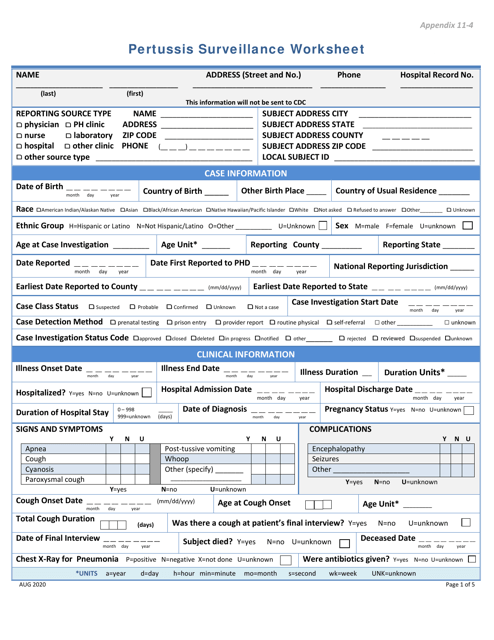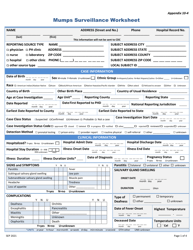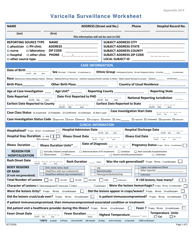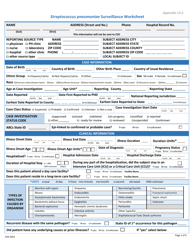Appendix 11-4 Pertussis Surveillance Worksheet
What Is Appendix 11-4?
This is a legal form that was released by the U.S. Department of Health and Human Services - Centers for Disease Control and Prevention on August 1, 2020 and used country-wide. As of today, no separate filing guidelines for the form are provided by the issuing department.
FAQ
Q: What is Appendix 11-4?
A: Appendix 11-4 is a Pertussis Surveillance Worksheet.
Q: What is pertussis?
A: Pertussis is a highly contagious respiratory infection, commonly known as whooping cough.
Q: What is the purpose of the Pertussis Surveillance Worksheet?
A: The purpose of the Pertussis Surveillance Worksheet is to track and monitor cases of pertussis.
Q: How does pertussis spread?
A: Pertussis spreads through respiratory droplets when an infected person coughs or sneezes.
Q: What are the symptoms of pertussis?
A: Symptoms of pertussis include severe coughing fits, a "whooping" sound when inhaling, and exhaustion.
Q: How is pertussis diagnosed?
A: Pertussis can be diagnosed through laboratory tests, such as a PCR or culture of respiratory secretions.
Q: What is the treatment for pertussis?
A: Treatment for pertussis includes antibiotics to shorten the duration of symptoms and prevent spread to others.
Q: Who is at risk for pertussis?
A: Anyone can get pertussis, but infants and young children are at highest risk for severe complications.
Q: How can pertussis be prevented?
A: Pertussis can be prevented through vaccination, maintaining good hygiene practices, and avoiding contact with infected individuals.
Q: What should I do if I suspect I have pertussis?
A: If you suspect you have pertussis, it is important to seek medical attention and follow the recommended treatment and prevention measures.
Form Details:
- Released on August 1, 2020;
- The latest available edition released by the U.S. Department of Health and Human Services - Centers for Disease Control and Prevention;
- Easy to use and ready to print;
- Yours to fill out and keep for your records;
- Compatible with most PDF-viewing applications;
- Fill out the form in our online filing application.
Download a printable version of Appendix 11-4 by clicking the link below or browse more documents and templates provided by the U.S. Department of Health and Human Services - Centers for Disease Control and Prevention.















